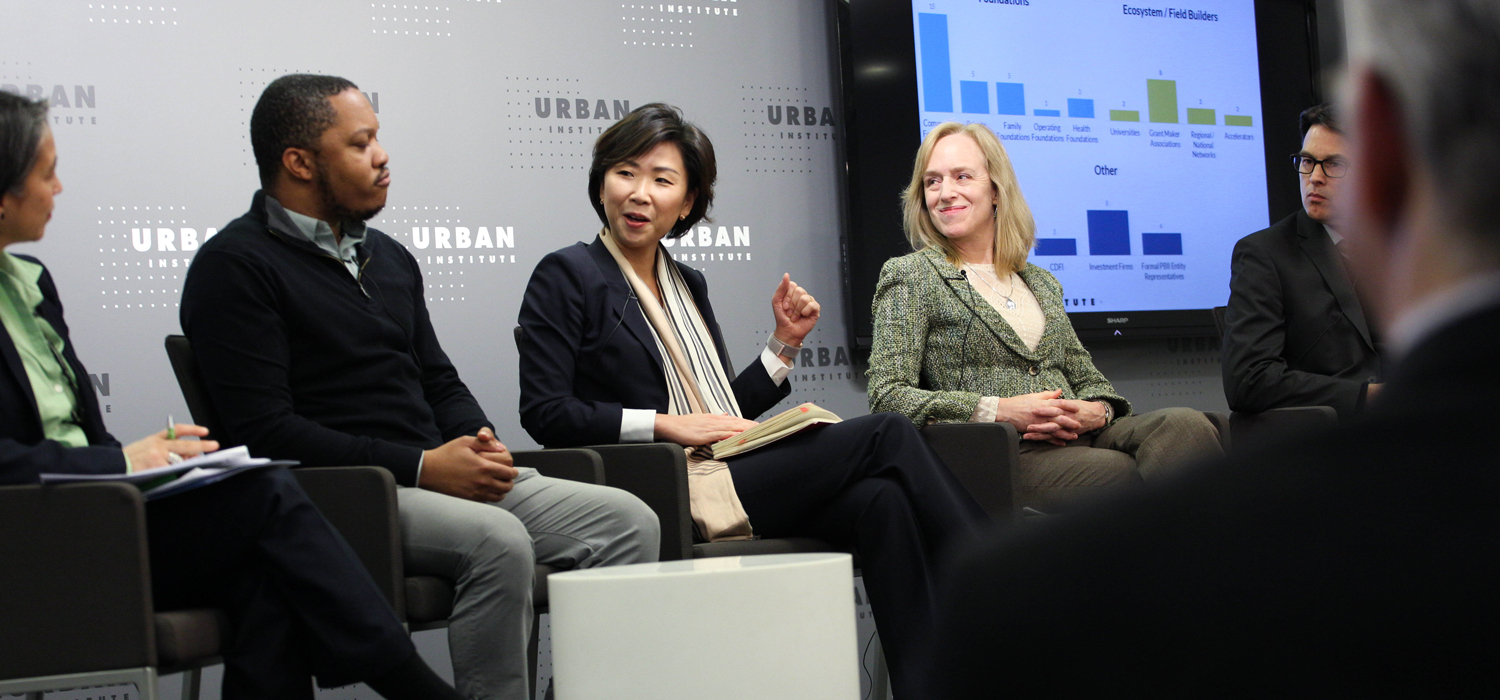Four Practical Insights on Place-Based Impact Investing Collaboration

This article was originally posted on the Urban Institute website, The Urban Institute opens minds, shapes decisions, and offers solutions through economic and social policy research.
How can foundations and private investors work with others to better align their investment decisions with their locally focused missions and values?
For many foundations, the answer lies in collaborative place-based impact investing (PBII), or using impact investing—investments made with the intent to yield financial and social or environmental returns—to commit capital locally and support communities.
Place-based impact investing is influenced by local needs, resources, and institutions, with broader lessons emerging from pioneers of this work across different communities.
Several insights emerged last month at a national convening of over 50 place-based impact investing leaders from foundations, community development financial institutions (CDFIs), philanthropy serving organizations, and others, held at the Urban Institute in collaboration with Mission Investors Exchange and with support from the John D. and Catherine T. MacArthur Foundation. These lessons, which can help advance the practices of others already engaged in these efforts and those just starting out, include the following:
1. Leverage landscape analyses to build and strengthen collaborative relationships.
Frequently, the critical first step in launching a PBII effort is conducting an analysis to map relationships, assess community needs, and identify capital gaps. Applying formal or informal capital or relationship mapping tools can present an excellent opportunity to build and strengthen key relationships within the local impact investing ecosystem. As one participant put it, these efforts help “build the connective tissue that leads to optimal capital allocation.”
2. Don’t let the perfect be the enemy of the good. Learn by doing.
Understanding the data and building relationships are important, but there’s risk in losing momentum by overdesigning a framework for collaborative work that will need to adapt in practice anyway. Numerous stakeholders found they learned the most by actually launching efforts, making deals, and applying real-time corrections and adjustments. Some questions, like how to perfect impact measures, remain an ongoing challenge, but most stakeholders found that a willingness to act, and then to iterate on their efforts, was the most effective way to respond to these unresolved questions.
3. Use committed leadership to overcome barriers to collaboration.
Place-based impact investing doesn’t require radically new tools. Rather, such efforts benefit from an intentional shift in thinking about where, why, how, and with whom capital is deployed. Such a change can present challenges for investors, investees, and other partners in thinking about the role of philanthropic capital. Engaging partners early, often, and through examples can help overcome these barriers.
4. Effective collaborations are embracing the transformative potential of impact capital to promote systemic change.
Many communities see an opportunity through PBII efforts to redefine their leadership roles and how they use their capital to advance systemic changes. For example, impact capital can not only fulfill capital needs within communities of color, but local collaboratives can also attract other capital to address systemic racial biases. Some efforts are focusing on the diversity of fund managers, and others are investing resources to increase the pipeline of social enterprises led by people of color.
In collaboration with Mission Investors Exchange, we will integrate these insights and other attendee feedback into a toolkit of practical resources for the field and forthcoming Urban research products: a scan of place-based impact investing practices and approaches and a review of capital gaps and flows methodologies. The former draws from dozens of interviews with field builders, while the latter builds on Urban’s work in Detroit and elsewhere.
The convening and these resources are part of a larger effort to advance a shared understanding of collaborative PBII and establish a knowledge platform for practitioners by elevating practitioners’ work and providing resources to accelerate these and other efforts.
Photo caption: (From left to right) Nhadine Leung, Managing Director at Mission Investors Exchange, Rodney Foxworth, Executive Director of BALLE, Joohee Rand, Vice President for Community Investment and Strategy for the Santa Fe Community Foundation, Susan Hammel, Strategic Financial Consultant at the Minnesota Council on Foundations and Bert Feuss, Senior Vice President of Investments at the Silicon Valley Community Foundation hold a discussion at the Urban Institute on February 2, 2018. Photo by Maura Friedman/Urban Institute.





